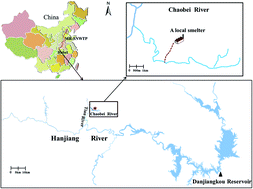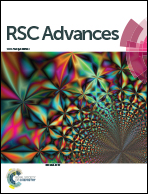Development, modification, and application of low-cost and available biochar derived from corn straw for the removal of vanadium(v) from aqueous solution and real contaminated groundwater†
Abstract
In this work, a low-cost and available material for use as a permeable reactive barrier (PRB) to prevent vanadium in groundwater from leaking into river water was developed. Three modified biochars were prepared from available corn straw pretreated with CsCl, Zn(II), and Zr(IV) to enhance ion exchange capacity (IEC) and specific surface area, and were designated as Cs-BC, Zn-BC, and Zr-BC, respectively. These materials were characterized via IEC, N2 adsorption–desorption, Fourier-transform infrared spectroscopy (FTIR), and X-ray diffraction (XRD) analyses. The Langmuir isotherm model could be applied for the best fit for the adsorption data of Cs-BC and Zr-BC, indicating that vanadium(V) sorption occurred in a monolayer. The vanadium(V) adsorption capacities of Cs-BC, Zn-BC, and Zr-BC were 41.07, 28.46, and 23.84 mg g−1, respectively, which were 3.22–5.55 times higher than that of commercial activated carbon (AC) (7.40 mg g−1), probably because of their higher IECs and specific surface areas after modification. In addition, no heavy metal leaching was found from the modified biochars during the adsorption processes when pH > 2. According to the FTIR and XRD patterns, the adsorption mechanism of Cs-BC and Zr-BC was ion exchange, whereas for Zn-BC, it was mainly surface precipitation and electrostatic attraction. The adsorption of vanadium(V) onto the modified biochars was independent of pH in the range of 4.0 to 8.0. Furthermore, the removal efficiency of the vanadium(V) in real contaminated groundwater from the catchment of the Chaobei River by Zn-BC reached 100% at a dose of 4 g L−1. Hence, modified biochars are promising PRB filling materials for removing vanadium(V) from contaminated groundwater.



 Please wait while we load your content...
Please wait while we load your content...